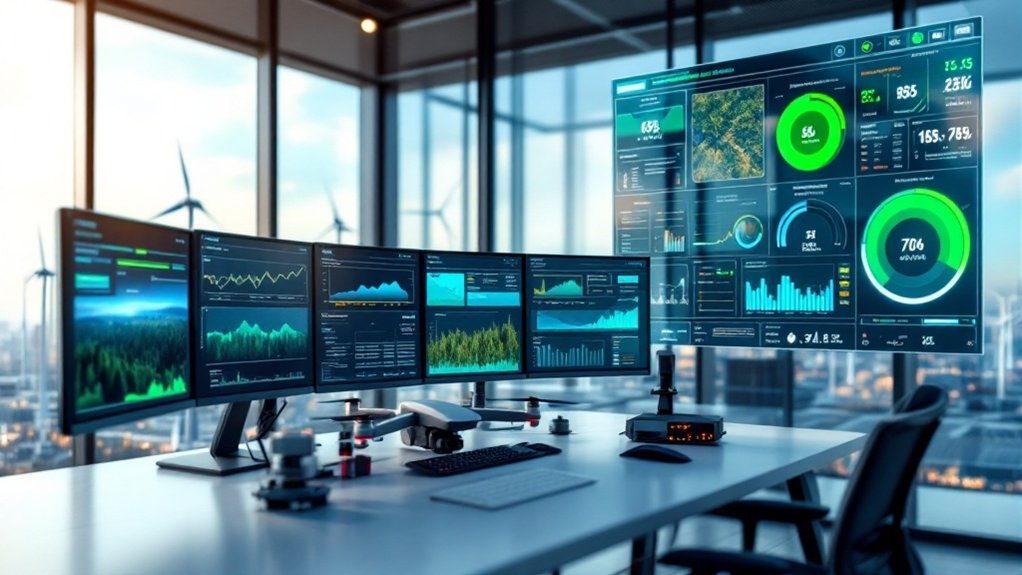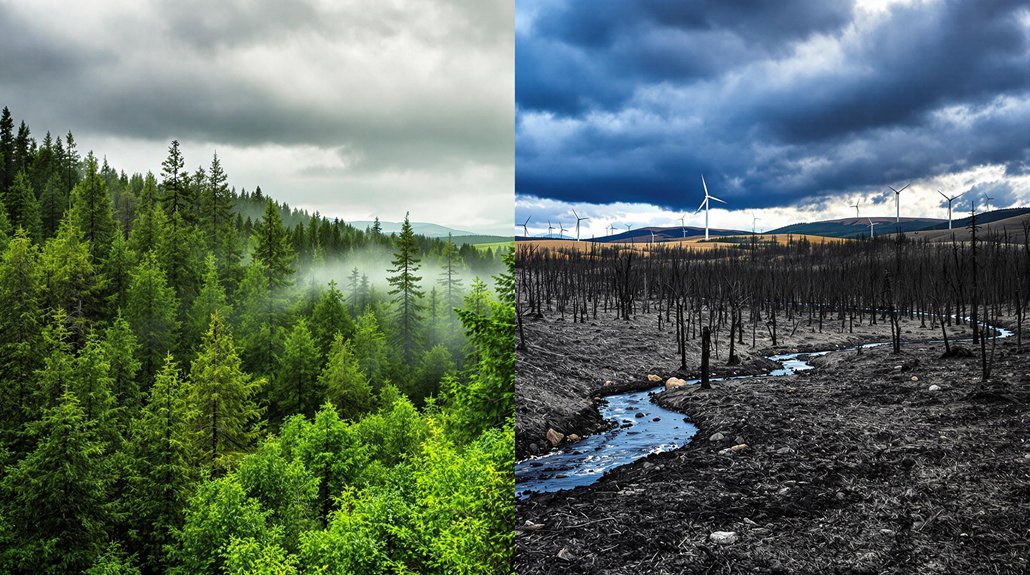Carbon offset verification is the process of independently validating environmental claims made by companies about their emission reductions. Third-party organizations like Verra and Gold Standard act as environmental accountants, scrutinizing projects through document reviews and site visits. Modern technology, including satellites and IoT devices, helps streamline these assessments. While the $2 billion voluntary carbon market keeps growing, maintaining rigorous standards isn’t exactly a walk in the park. Digging deeper reveals the complex dance between accountability and market growth.

The world of carbon offset verification isn’t exactly a thrill ride, but it’s essential for keeping environmental claims honest. When companies claim they’re saving the planet one carbon credit at a time, somebody needs to make certain they’re not just blowing hot air – literally. That’s where third-party verifiers come in, clipboard in hand, ready to scrutinize every decimal point of those emission reduction claims.
The process is about as exciting as watching paint dry, but it’s remarkably thorough. Project developers start by implementing their carbon-cutting activities and collecting data. Then, verification bodies like Verra or Gold Standard swoop in to check if everything adds up. They’re like the accountants of the environmental world, except instead of tracking dollars, they’re tracking tons of carbon dioxide. Each certification ensures one metric tonne of emissions is properly accounted for. The global voluntary carbon market has experienced tremendous growth, reaching nearly 2 billion dollars in value by 2021.
Carbon verification might not be glamorous, but these environmental accountants ensure every ton of CO2 reduction is legitimate and accounted for.
Let’s be real – this isn’t simple stuff. Verifiers have to guarantee projects meet some pretty demanding principles. “Additionality” means proving these reductions wouldn’t have happened anyway (try proving a negative – fun times). Then there’s “permanence,” because nobody wants their carbon savings going up in smoke next year. These requirements keep everyone honest, or at least trying to be. Major tech companies like Microsoft and Google are leading the charge in purchasing verified carbon credits.
The verification process itself is a marathon of bureaucratic proportions. It starts with notification, moves through planning and document reviews, and culminates in on-site visits where verifiers get their boots dirty checking if projects are actually doing what they claim. Sometimes literally dirty – especially in forestry projects.
Technology is slowly dragging this process into the 21st century. Satellite imagery and IoT devices are making verification more accurate and less dependent on human eyeballs. That’s good news because the challenges are real – measuring greenhouse gas reductions isn’t exactly like counting sheep.
And with carbon markets expanding faster than a teenager’s sneaker collection, maintaining rigorous standards while keeping costs reasonable is quite the balancing act. But hey, somebody’s got to keep the carbon offset world honest, even if it means drowning in spreadsheets and methodology documents.








